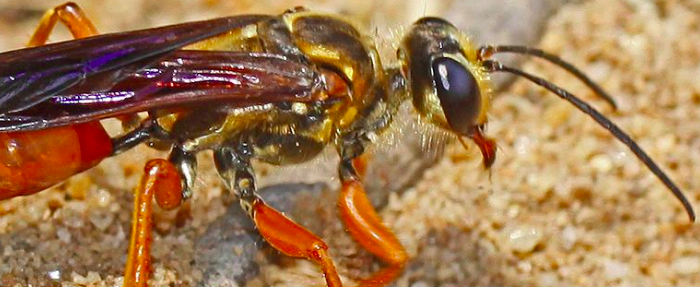
This insect owes its name to the short golden hairs that cover its thorax and head. It has black antennae and orange or amber wings. The legs are orange, except for the coxa, the part closest to the body, which is black. The large golden sphex has a slim waist and its abdomen is two-tone: orange-red for the front part and black for the rear part. Its total length is 15 to 27 mm, the male being a little smaller than the female.
Life cycle
After being fertilized, the female digs her nest in the ground. This is formed by an almost vertical central tunnel from which radiate two to six other tunnels ending in a cell intended to receive a larva. The female goes hunting and deposits prey in the cells. She then lays an egg on each of the prey, which are paralyzed, but alive. The larva that comes out of the egg feeds on the insect left by the female. There is only one generation per year.
Geographical distribution
This species is found in southern Canada, the United States and further south to Brazil, Peru and Ecuador.
Habitat
The great golden sphex lives in wasteland and meadows near which there are sandy areas.
Food
The adult feeds on flower nectar.
The larva eats the prey hunted and paralyzed by the female. These are insects belonging to the order Orthoptera, such as locusts, crickets and grasshoppers.
What you need to know
This species is sometimes gregarious and regroup a hundred individuals on the same area. This species can use the same nesting site for several years in a row.
Ecological roles
This predatory wasp plays an important role in the food chain.